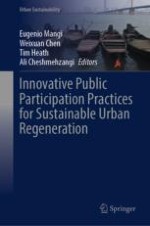2024 | OriginalPaper | Buchkapitel
3. Implementing a Participatory Design Approach to Create a Sensory-Friendly Public Space for Children with Special Needs
verfasst von : Lingling Deng, Surabhi Ratavjia, Prapa Rattadilok
Erschienen in: Innovative Public Participation Practices for Sustainable Urban Regeneration
Verlag: Springer Nature Singapore
Aktivieren Sie unsere intelligente Suche, um passende Fachinhalte oder Patente zu finden.
Wählen Sie Textabschnitte aus um mit Künstlicher Intelligenz passenden Patente zu finden. powered by
Markieren Sie Textabschnitte, um KI-gestützt weitere passende Inhalte zu finden. powered by
